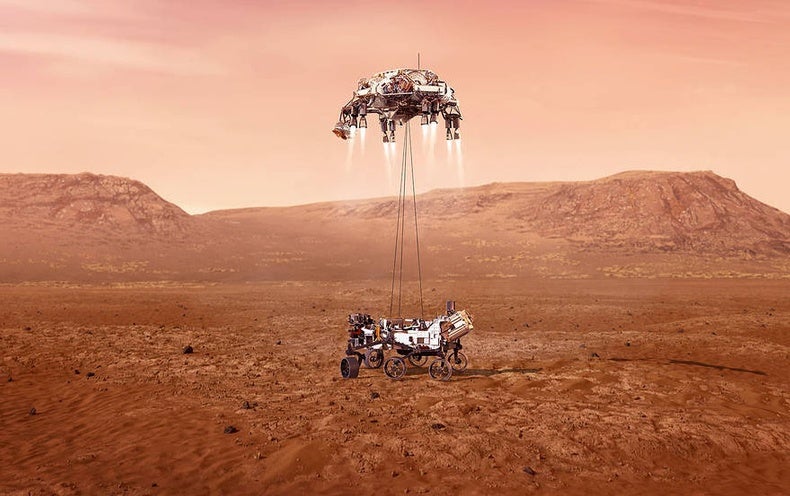
Our forefathers put in motion a chain of circumstances that would very probably result in humans stepping on Martian land the minute we emerged from our caves and stared up at the night sky with astonishment.
And, if the present hoopla is to be believed, that day might arrive within the next several decades. NASA has stated that a crewed trip to Mars will be launched in the 2030s.
Meanwhile, those of us who are still stranded on this planet must contemplate what such a feat would signify for humanity in the long run.
Is Elon Musk correct in his assessment? Is it critical for humanity’s survival to become a “multiplanet species” as soon as possible?
And, if that’s the case, what does it imply? How can we transform a desolate, stony planet that makes Antarctica appear like a balmy vacation spot into a location where people would want to raise their children?
The answer is straightforward: terraforming. Basically, we’re trying to find out a method to make Mars more like Earth through science and engineering.
Of course, we don’t have the technology to terraform planets as a race. If we did, we might be able to utilise it to prevent our own from deteriorating to the point of no return as a result of climate change caused by humans.
But let’s say we figure out terraforming eventually. What would it resemble?
The initial stages, according to a collaboration of NASA, RAL space lab, and Princeton academics, would be to stabilise the red planet’s magnetosphere.
According to the team’s paper:
The Earth’s magnetosphere helps protect the planet from the potential sterilizing effects of cosmic rays and also helps retain the atmosphere, which would otherwise by stripped by large solar storms as they pass over the planet.
Mars does have small patches of remnant surface magnetic field, but these are localized in the southern hemisphere and are not of sufficient size or magnitude to protect the planet or a colony.
The key idea would then be to find out a means to jumpstart the atmosphere by creating a magnetosphere similar to the one seen on Earth.
However, as Brian Koberlein of Universe Today points out, this is easier said than done:
Unfortunately, we can’t just recreate Earth’s magnetic field on Mars. Our field is generated by a dynamo effect in Earth’s core, where the convection of iron alloys generates Earth’s geomagnetic field. The interior of Mars is smaller and cooler, and we can’t simply “start it up” to create a magnetic dynamo.
The study goes on to say that one potential option is to use one of Mars’ moons as a type of magnetic particle generator that charges the planet from the outside in.
It’s a little more complicated than that, but the idea is that the planet’s magnetosphere would build around it, eventually leading to a stable biosphere. You’d have access to clean water and breathing air, as well as shielding from the damaging radiation that today makes life on Mars a misery.
It’s easy to envisage plants and wildlife flourishing on Mars in a handful of millennia. And, of course, such an ecosystem must be capable of supporting human existence.
And there are some philosophical ramifications to this. At this time, scientists agree that humans have not found solid proof of sentient life outside of our own planet.

Even if we never find extraterrestrial life, life on other worlds might exist in a few hundred years. What if, by 2500, the unusual circumstances we’ve created on Mars have resulted in specialised flora and animals?
Humans would have spread the first known seeds of life beyond Earth, establishing proof for our species as the universe’s founders of intelligent life.
After all, if we can terraform Mars, there’s no reason we can’t do the same on other worlds. In fact, the team working on the magnetosphere problem sees applications for the technology that go beyond simply making planets habitable.
Per the paper:
Whilst the ideas presented here are at the scale of a planet like Mars, the principles are equally applicable to smaller scale unmagnetized objects like manned spacecraft, space stations or moon bases, creating protective ‘mini-magnetospheres’.
Solving the deep space radiation problem with craft-sized magnetospheres would be a game-changer for interplanetary travel and, in the end, a crucial basis for crewed long space missions.
The researchers emphasise that the purpose of this study is to examine the potential uses and engineering challenges as a conversation starter, not to explain the need for such technology.
It’s unlikely that we’ll be able to cultivate tomatoes on Mars for generations. However, it’s never too early to consider how we’ll get from here to eating Martian marinara sauce.




